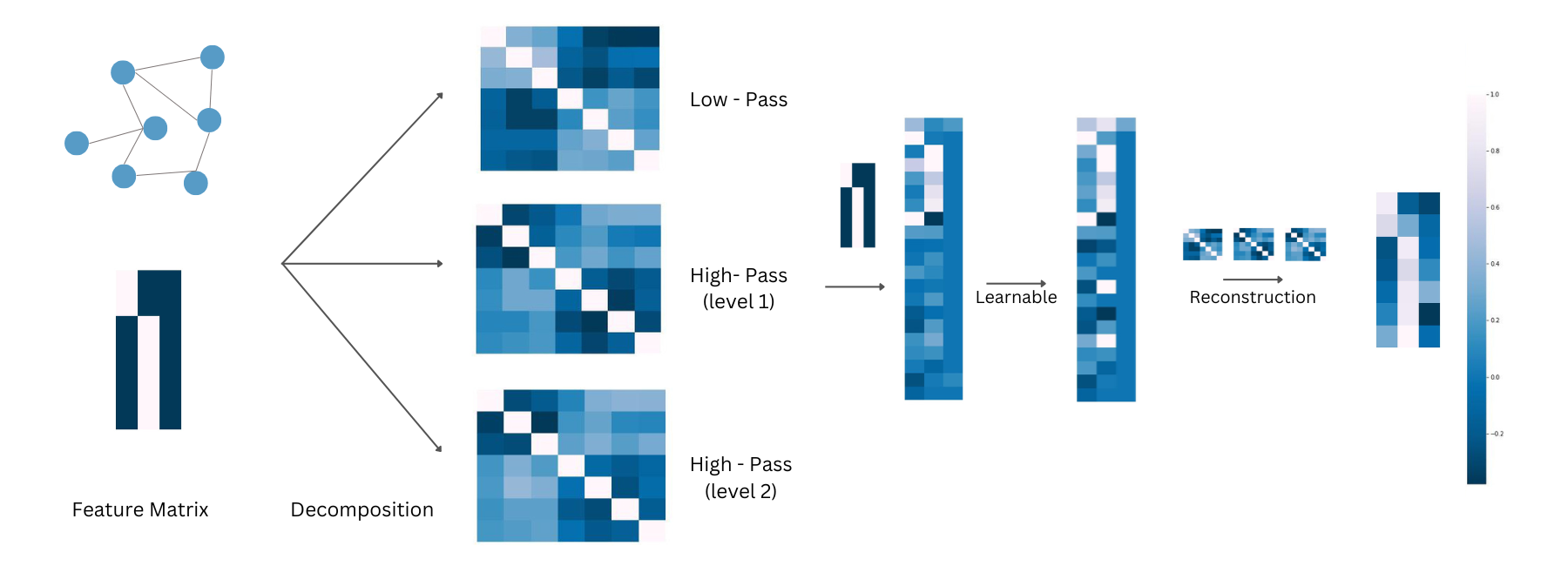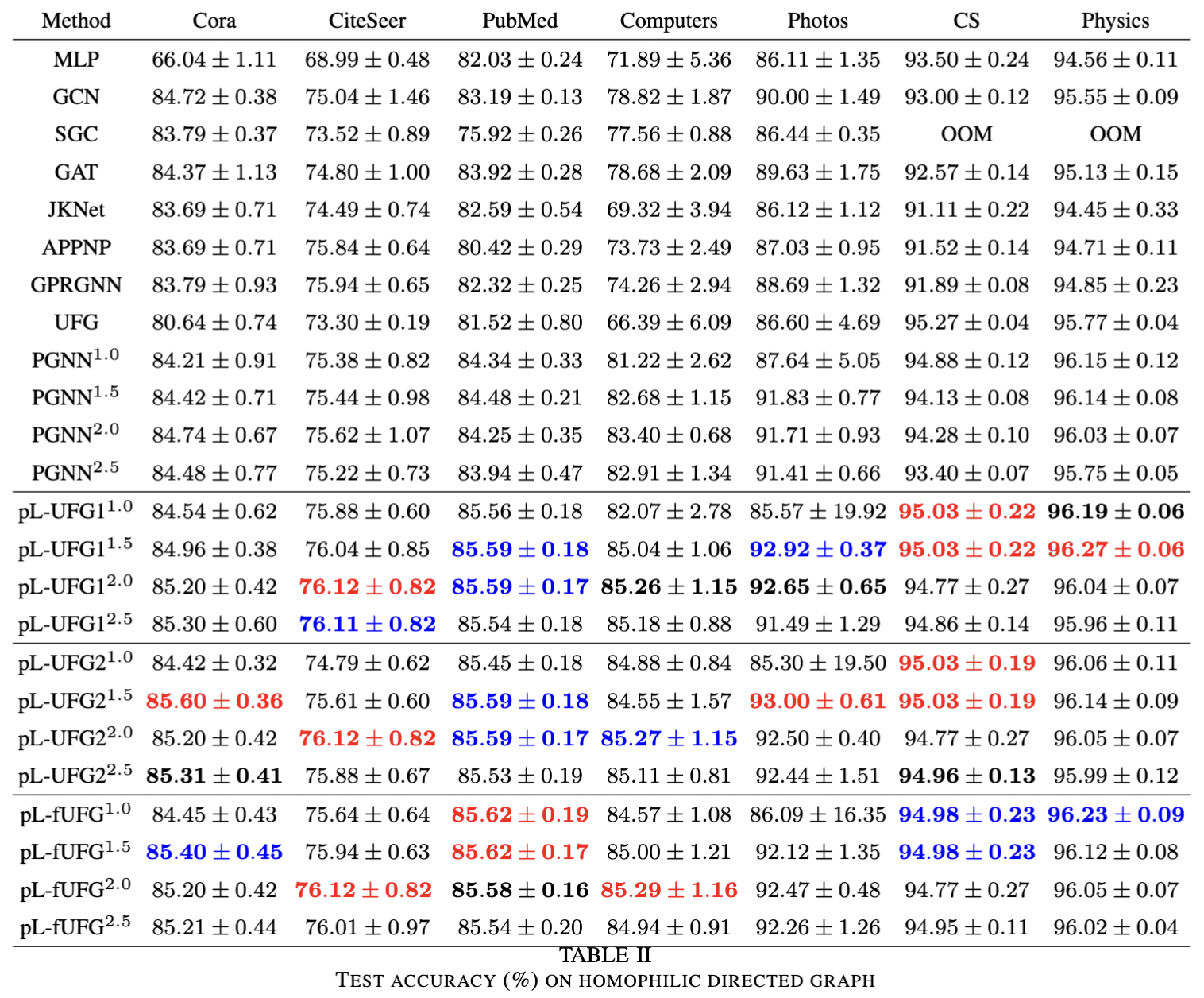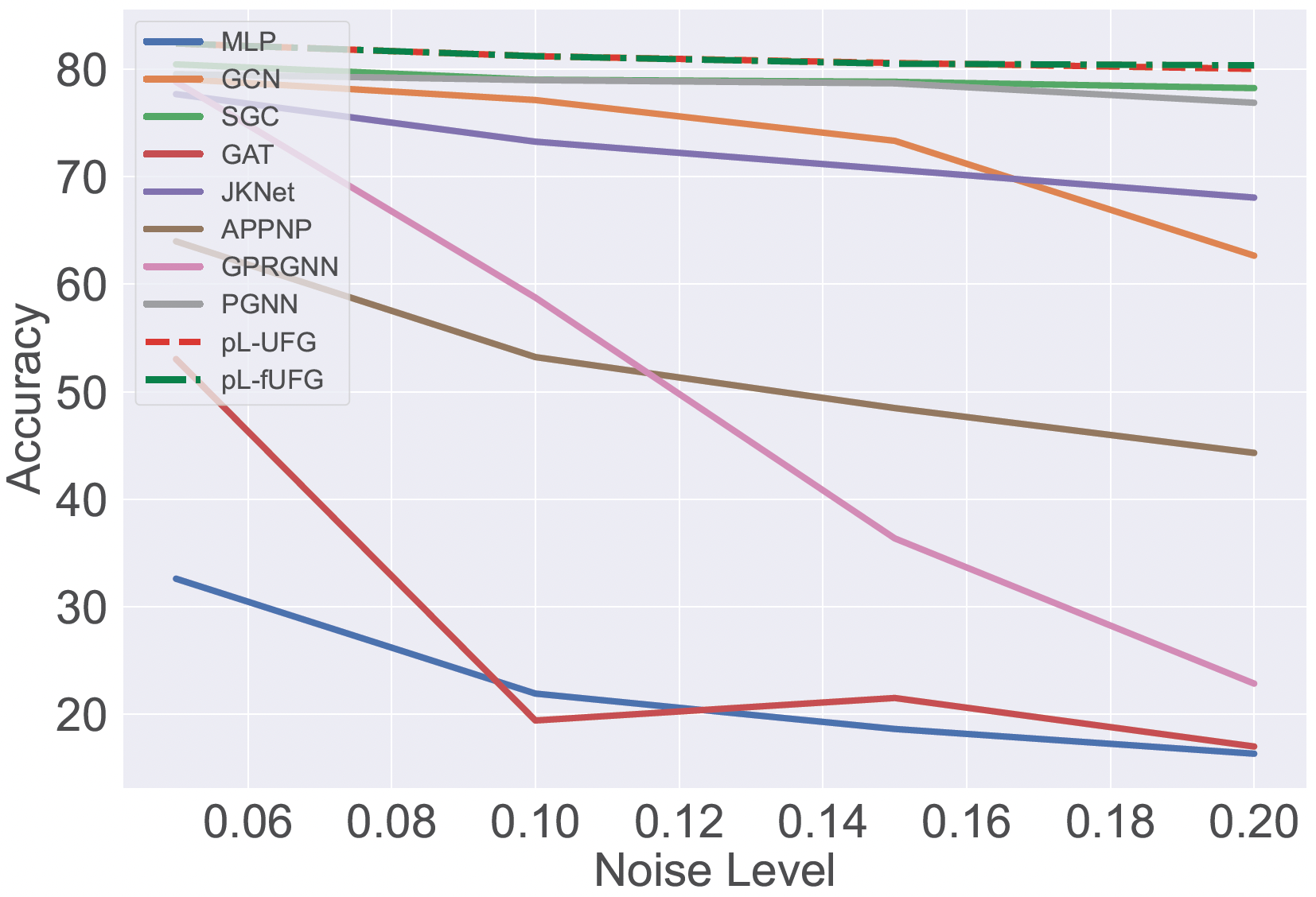Before running our code:
- Please download the packages from: https://github.com/guoji-fu/pGNNs.
- Please merge "src" folder from both https://github.com/guoji-fu/pGNNs and pL-UFG.
- Since we made a modification on the "data_proc.py" and "main.py", please using ours for running the experiment.
 Fig.1 The above figure shows the framelet framework by giving a graph with structure (adjacency matrix) and feature information.
Fig.1 The above figure shows the framelet framework by giving a graph with structure (adjacency matrix) and feature information.
Fig.2 The figure above shows the working flow of the
Fig.3 Denoising power on heterophilic graph (Chameleon).
Fig.4 Denoising power on homophilic graph (Cora).





